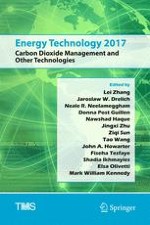2017 | OriginalPaper | Buchkapitel
Potential CO2 Emission Reduction and H2 Production Using Industrial Slag Wastes Originating from Different Industrial Sectors
verfasst von : Jinichiro Nakano, James Bennett, Anna Nakano
Erschienen in: Energy Technology 2017
Aktivieren Sie unsere intelligente Suche, um passende Fachinhalte oder Patente zu finden.
Wählen Sie Textabschnitte aus um mit Künstlicher Intelligenz passenden Patente zu finden. powered by
Markieren Sie Textabschnitte, um KI-gestützt weitere passende Inhalte zu finden. powered by
